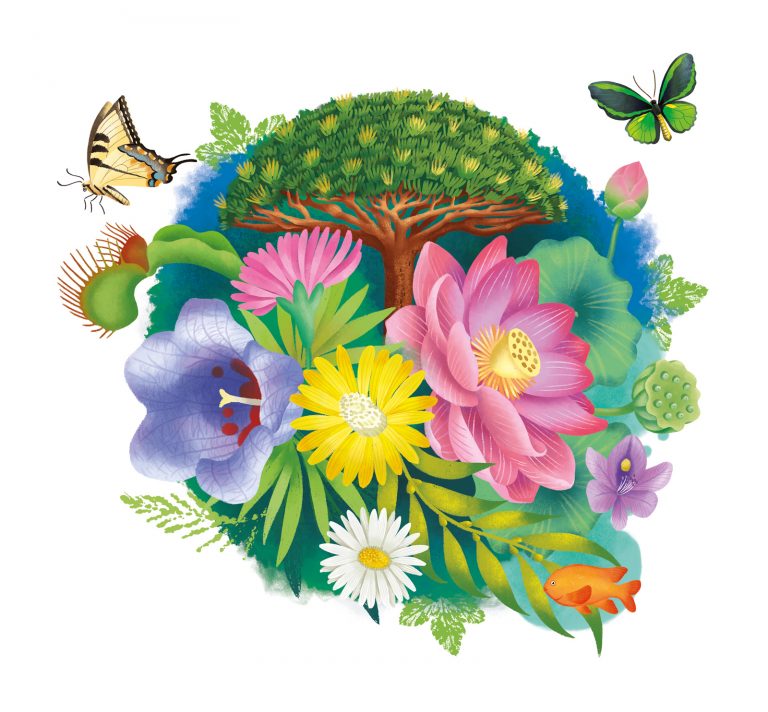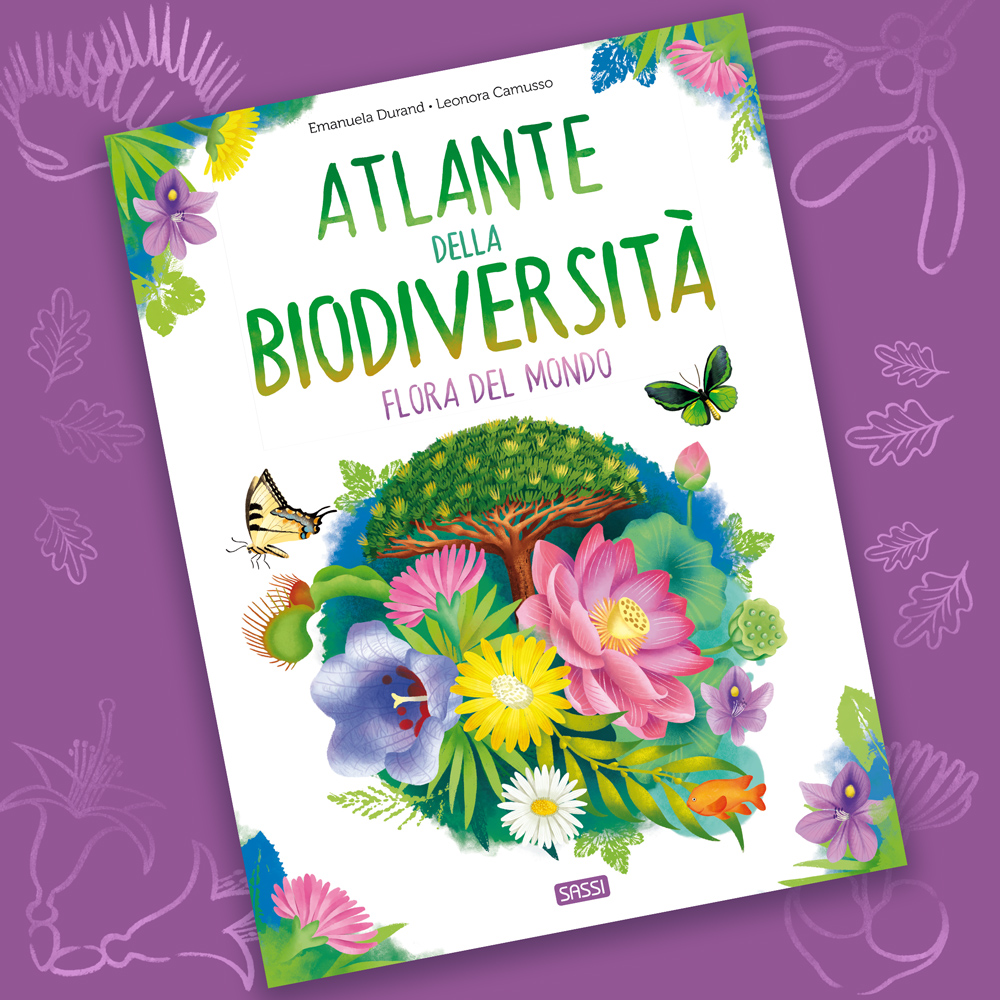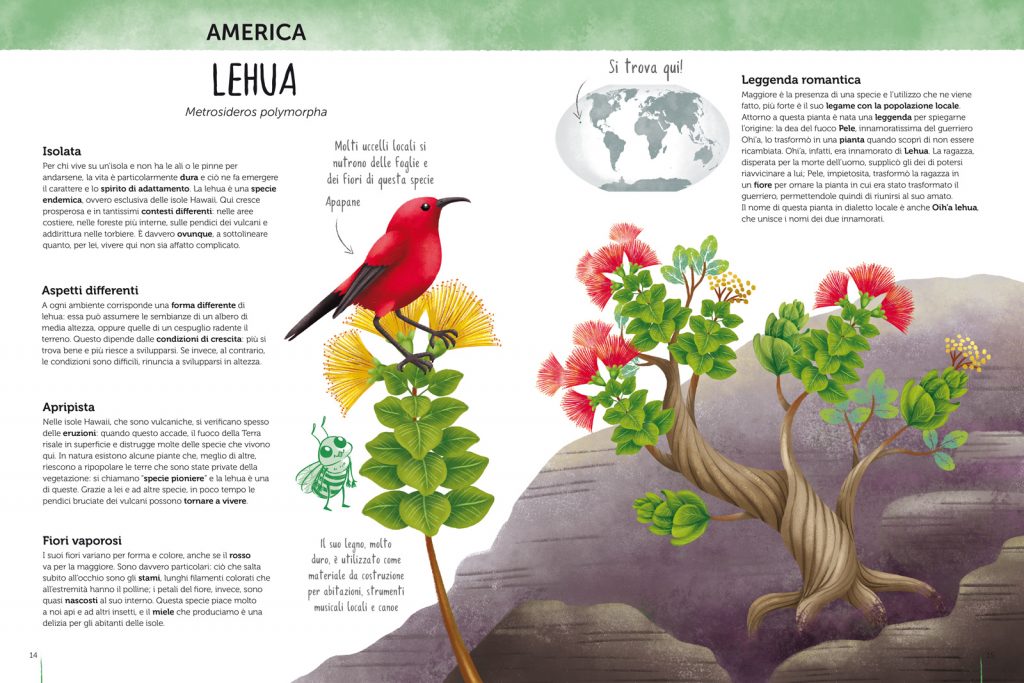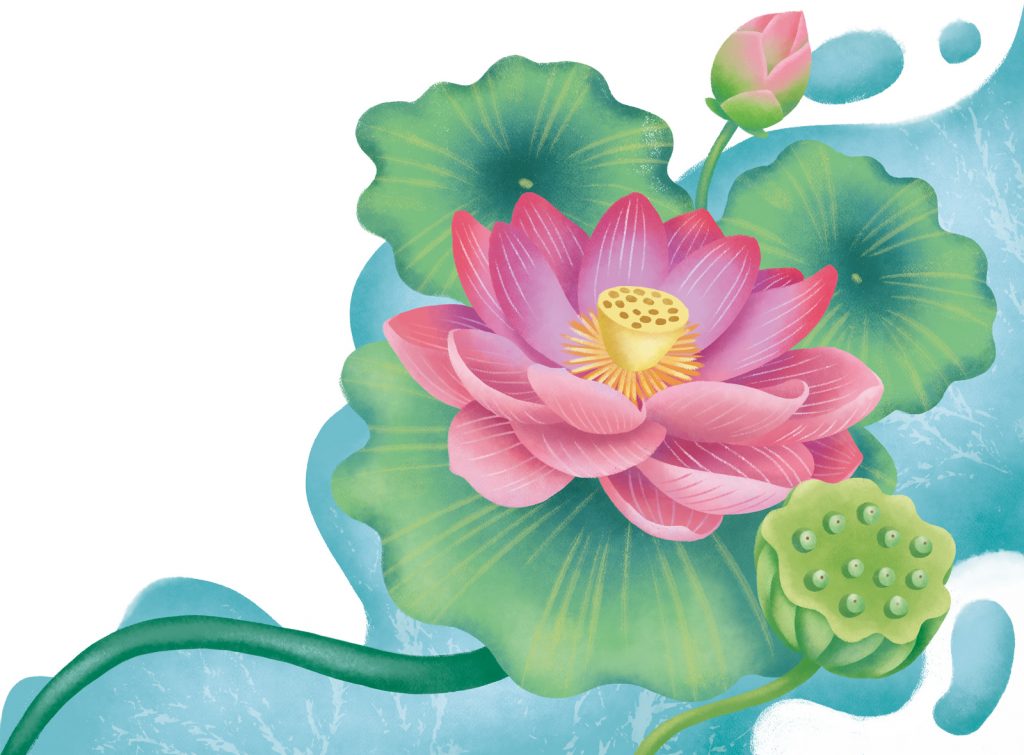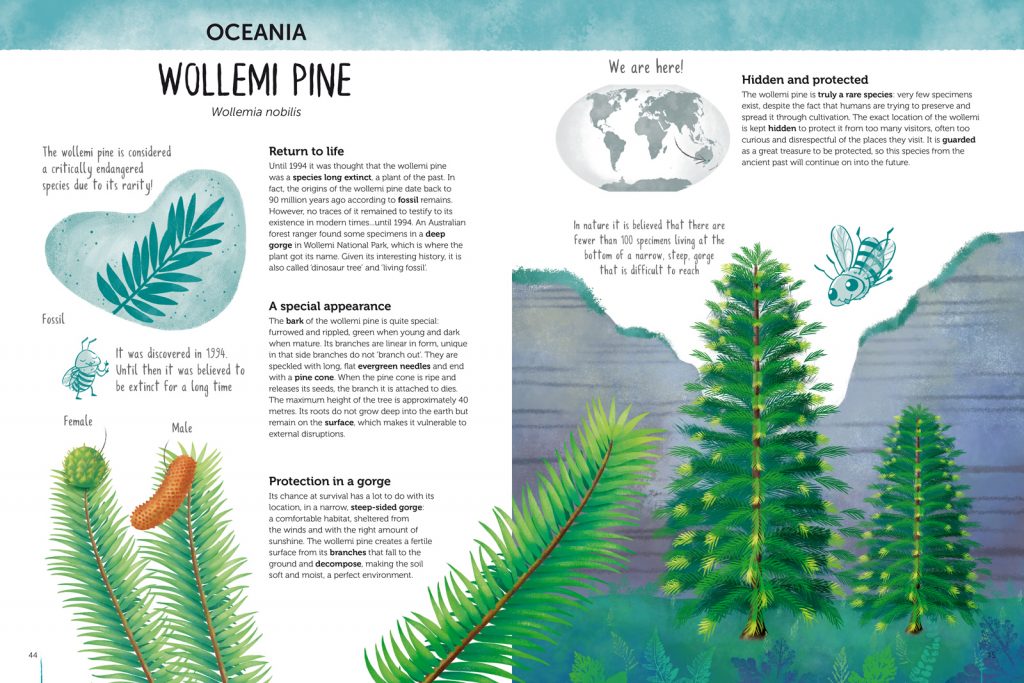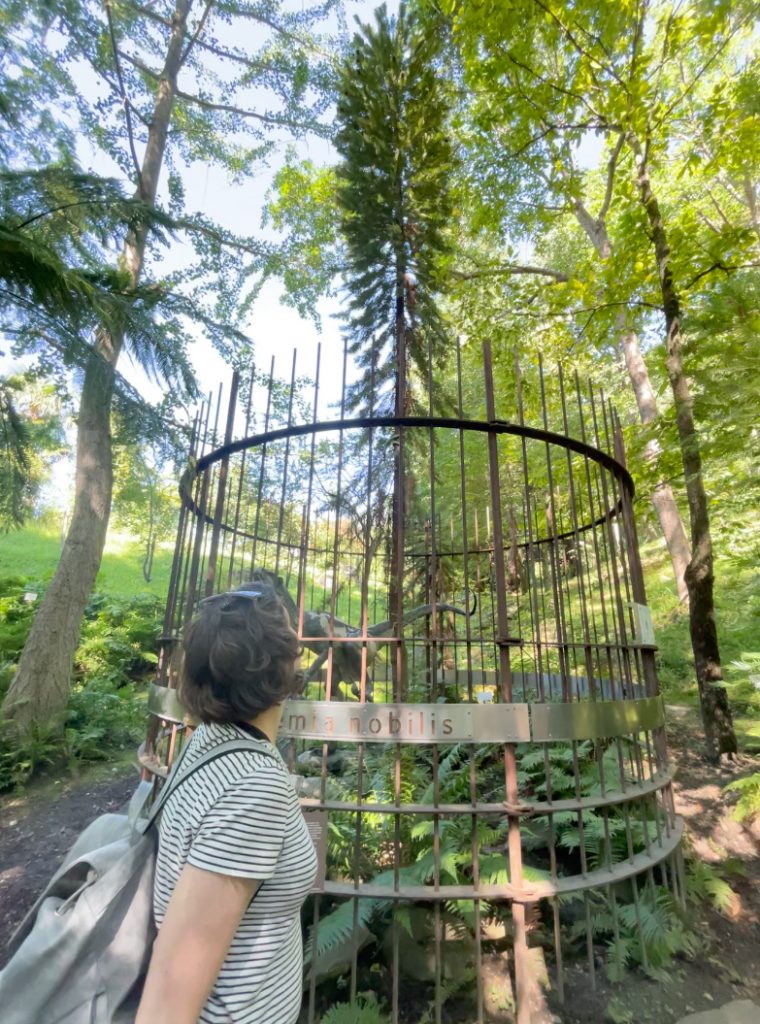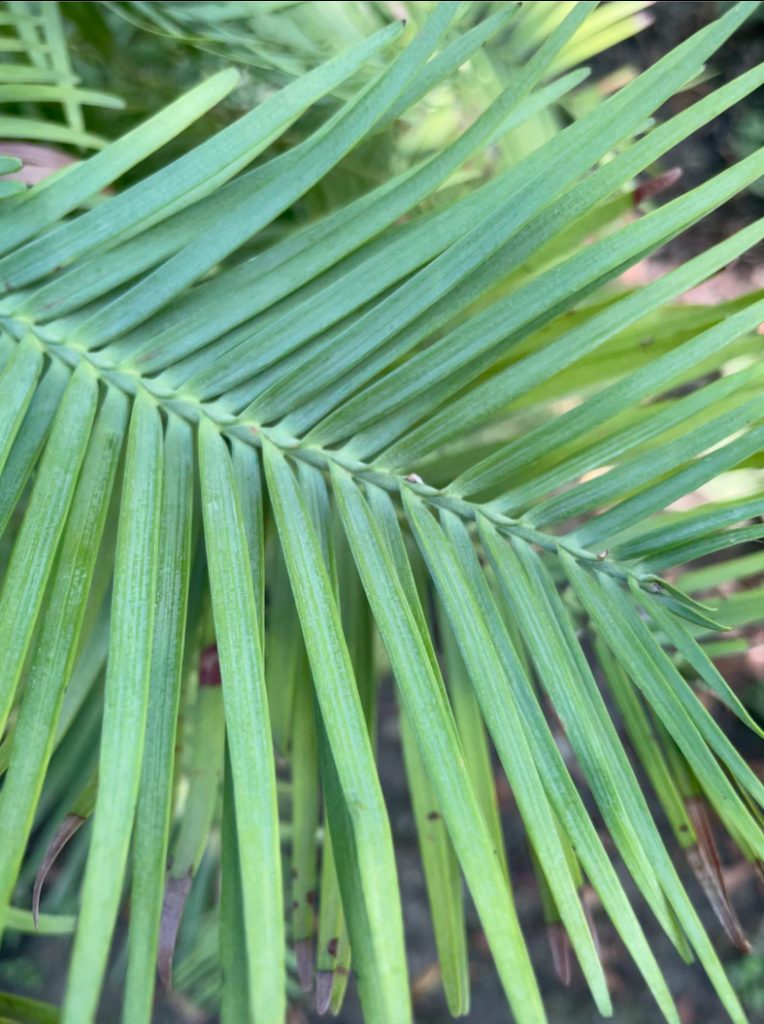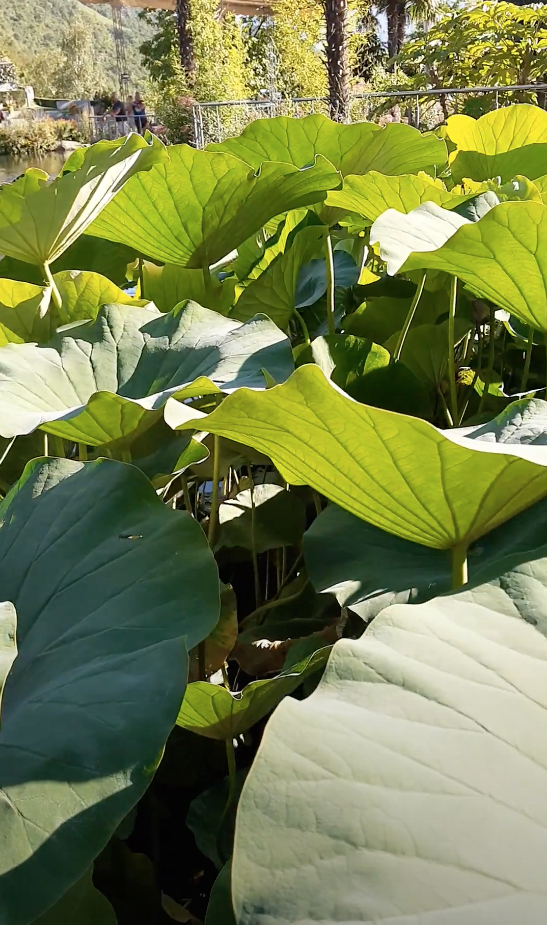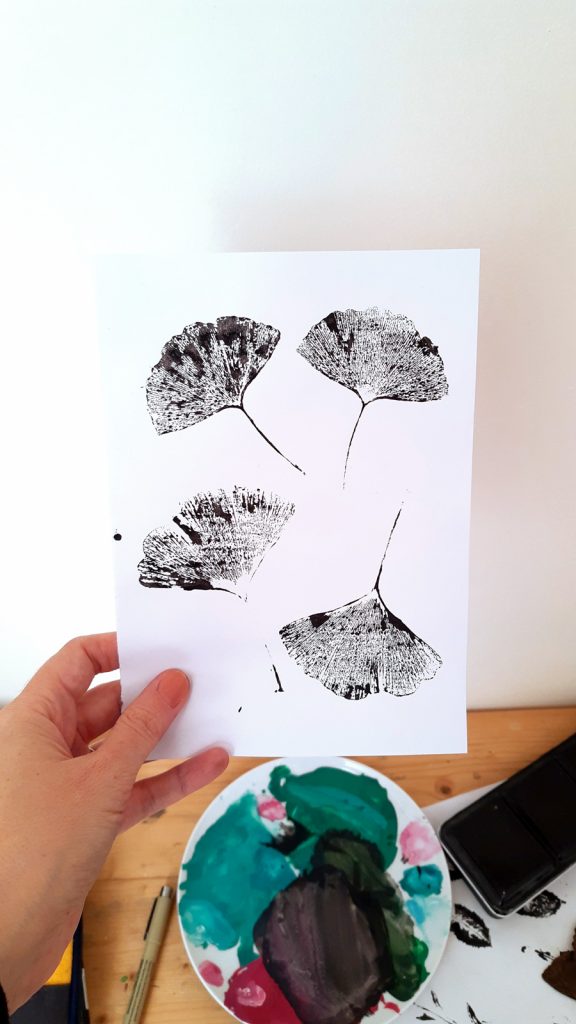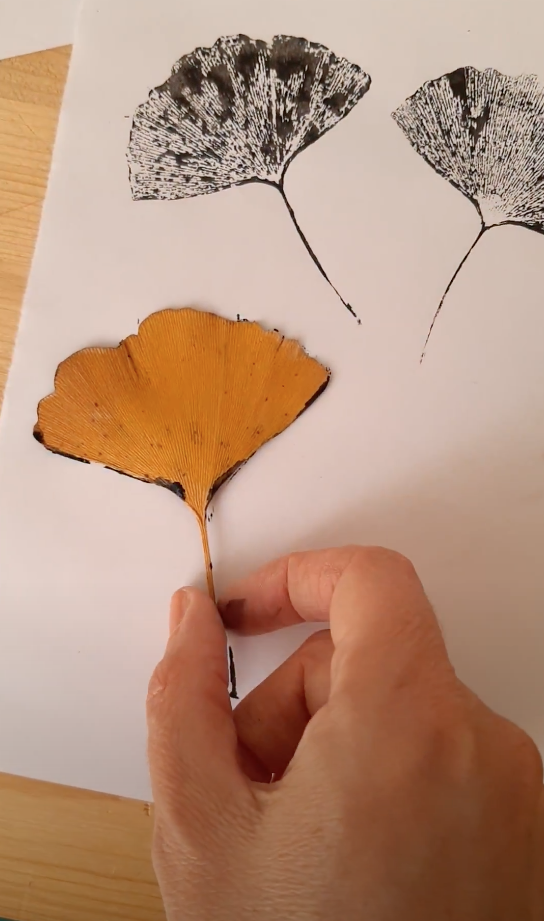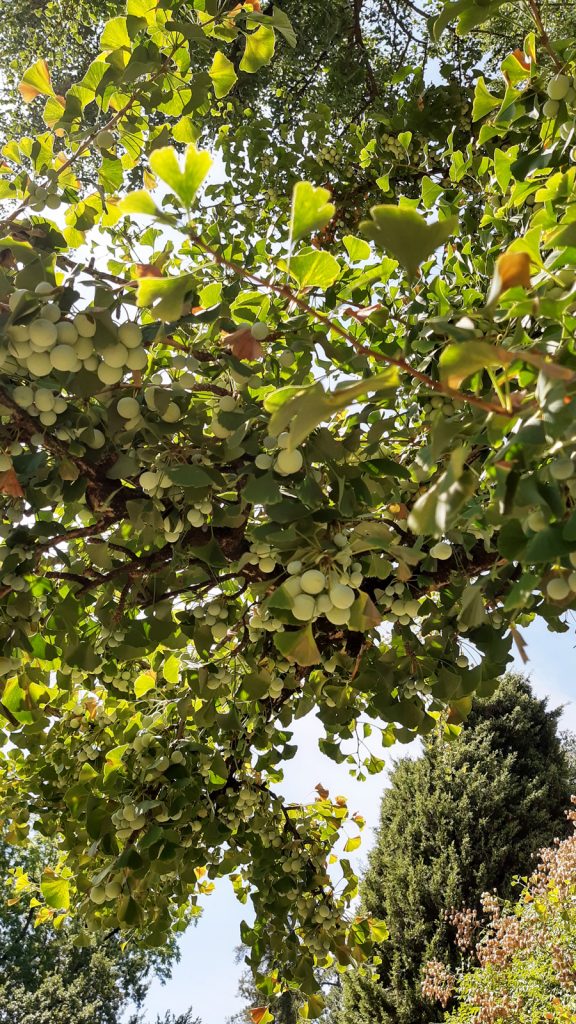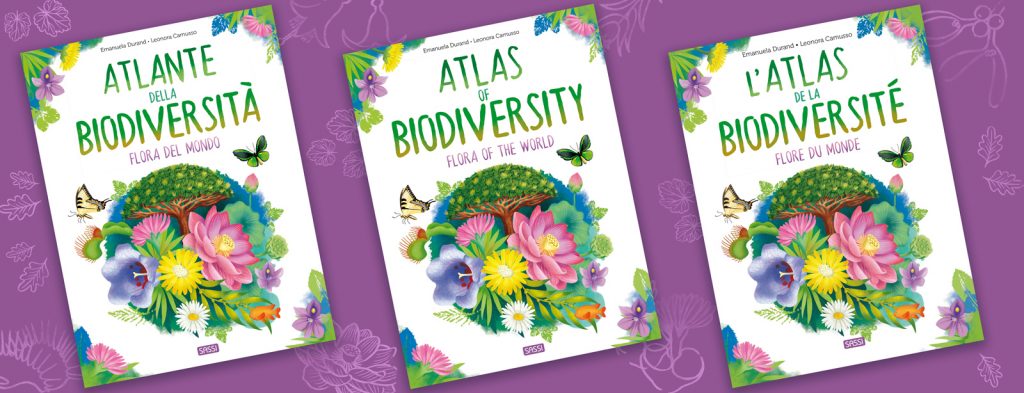The fourth volume of the Atlases of Biodiversity that I illustrated – Flora of the world – is out in bookstores.
Like the previous ones, this has been written by the unique Emanuela Durand, and published by Sassi Junior.
After a highly challenging selection, in the book you will find 26 plants from all over the world. They are not just casual plants, but all of them have features that amazed me and made me passionate about the subject. Yes, I must admit that before working on this book, the vegetal world had never excited me so much, but of course I’ve happily changed my mind.
For example, I have found that the lotus has leaves that can reach one meter in length and that are completely impermeable, so that water and dirt do not adhere to its surface.
Or that the dragon tree is named that way because of numerous legends about the red resin that the tree produces, known since ancient times as “dragon’s blood” and used as medicine and dye.
During and after the realization of the book I tried to read more on the subject and, at the end of the work, I also decided to go and see with my own eyes some plants that I have drawn, such as the wollemia, a tree discovered in 1994 and which retains the characteristics of prehistoric plants. It is one of the rarest trees in the world: in nature there are only a few hundred specimens in a secret location in Australia, hidden from tourism. Some plants have been propagated and today one can be found in the Botanical Garden of Merano! It’s funny, but I wouldn’t have been so excited even if I had to meet a famous person!
I also met and observed other plants such as the lotus, also in Merano, and the gingko and lithops of the Padova botanical garden. The feeling was the same of meeting old friends.
Like in the previous books, I wanted to integrate some plant elements collected directly from nature into the pages of the Atlas.
In the illustration of the gingko I used real tree leaves to create stamps which I then digitized and used to enrich the background.
Working on this book gave me the opportunity to understand that plants are not inanimate organisms on the backdrop of the natural world, but are instead able to communicate, have a sense of direction and even move to perform actions!
I hope this book will make you as passionate about botany as it did with me! If you want to write me to tell me what you think: info@leonoracamusso.it
Find the book in bookstores, on the Sassi Junior website, and in online stores!
